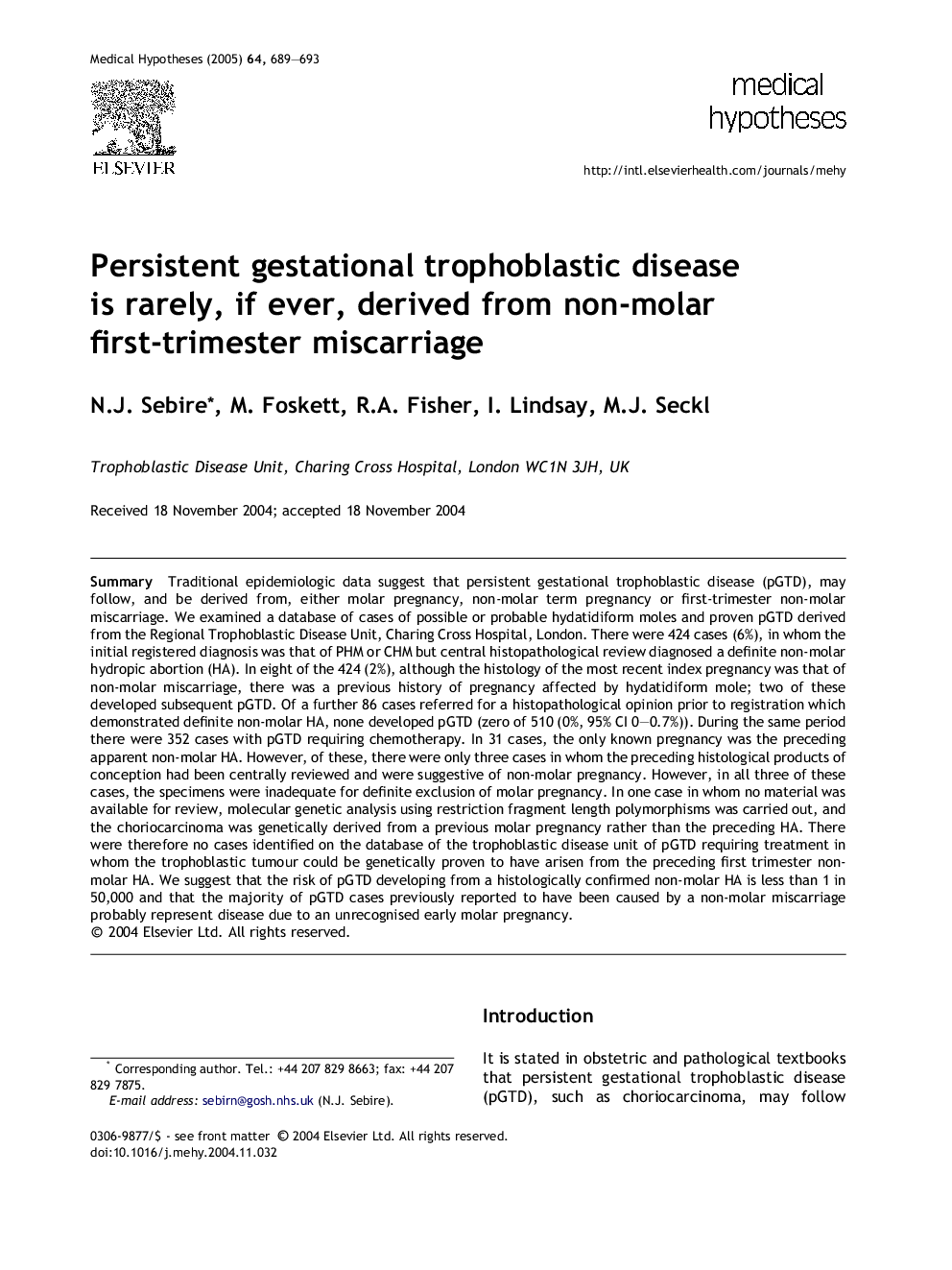| Article ID | Journal | Published Year | Pages | File Type |
|---|---|---|---|---|
| 8995785 | Medical Hypotheses | 2005 | 5 Pages |
Abstract
Traditional epidemiologic data suggest that persistent gestational trophoblastic disease (pGTD), may follow, and be derived from, either molar pregnancy, non-molar term pregnancy or first-trimester non-molar miscarriage. We examined a database of cases of possible or probable hydatidiform moles and proven pGTD derived from the Regional Trophoblastic Disease Unit, Charing Cross Hospital, London. There were 424 cases (6%), in whom the initial registered diagnosis was that of PHM or CHM but central histopathological review diagnosed a definite non-molar hydropic abortion (HA). In eight of the 424 (2%), although the histology of the most recent index pregnancy was that of non-molar miscarriage, there was a previous history of pregnancy affected by hydatidiform mole; two of these developed subsequent pGTD. Of a further 86 cases referred for a histopathological opinion prior to registration which demonstrated definite non-molar HA, none developed pGTD (zero of 510 (0%, 95% CI 0-0.7%)). During the same period there were 352 cases with pGTD requiring chemotherapy. In 31 cases, the only known pregnancy was the preceding apparent non-molar HA. However, of these, there were only three cases in whom the preceding histological products of conception had been centrally reviewed and were suggestive of non-molar pregnancy. However, in all three of these cases, the specimens were inadequate for definite exclusion of molar pregnancy. In one case in whom no material was available for review, molecular genetic analysis using restriction fragment length polymorphisms was carried out, and the choriocarcinoma was genetically derived from a previous molar pregnancy rather than the preceding HA. There were therefore no cases identified on the database of the trophoblastic disease unit of pGTD requiring treatment in whom the trophoblastic tumour could be genetically proven to have arisen from the preceding first trimester non-molar HA. We suggest that the risk of pGTD developing from a histologically confirmed non-molar HA is less than 1 in 50,000 and that the majority of pGTD cases previously reported to have been caused by a non-molar miscarriage probably represent disease due to an unrecognised early molar pregnancy.
Related Topics
Life Sciences
Biochemistry, Genetics and Molecular Biology
Developmental Biology
Authors
N.J. Sebire, M. Foskett, R.A. Fisher, I. Lindsay, M.J. Seckl,
